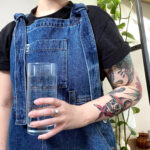Thinking about getting inked? That’s awesome! One of the first questions that pops into everyone’s mind, especially if it’s your first time, is: “How much is this going to hurt?” And honestly, yes, tattoos do hurt. Anyone who tells you differently probably has a very high pain tolerance or a selective memory!
A tattoo needle is inserting ink into your skin, penetrating several layers to make permanent art. So, a little discomfort is part of the process. However, the good news is that where you choose to get tattooed can significantly impact the pain level. Some spots are definitely more comfortable than others. Let’s dive into the Best Places For Tattoos, considering pain and other factors to help you choose the perfect spot for your next piece.
Top Spots for Tattoos with Less Sting
Generally speaking, the least painful places to get a tattoo are areas where you have more fat, thicker skin, and fewer nerve endings. Think about it – the opposite is true for the most painful spots, which tend to be bony areas with thin skin and lots of nerves, like your ribs, spine, and feet.
We polled tattoo enthusiasts and the team here at tattooat.com to get their insights on the most manageable tattoo locations. Here’s what they suggested are some of the best places for tattoos if you’re concerned about pain:
- Forearms: Consistently ranked as the number one least painful spot.
- Outer Upper Arms: Another great choice with more muscle and fat.
- Outer Shoulders: Similar to the upper arms, offering a good cushion.
- Outer Upper Thighs: Plenty of flesh and fewer nerve endings make this a comfortable spot.
- Calves: Muscle and fat provide a buffer against the needle.
- Lower Back: A popular and generally less sensitive area for many.
If you’re a first-timer, choosing one of these locations can make your introduction to the tattoo world a much smoother experience. Keep in mind though, pain is subjective! Some people surprisingly find areas like their shins or chest less painful, but for most, the forearm is the clear winner in terms of minimal discomfort.
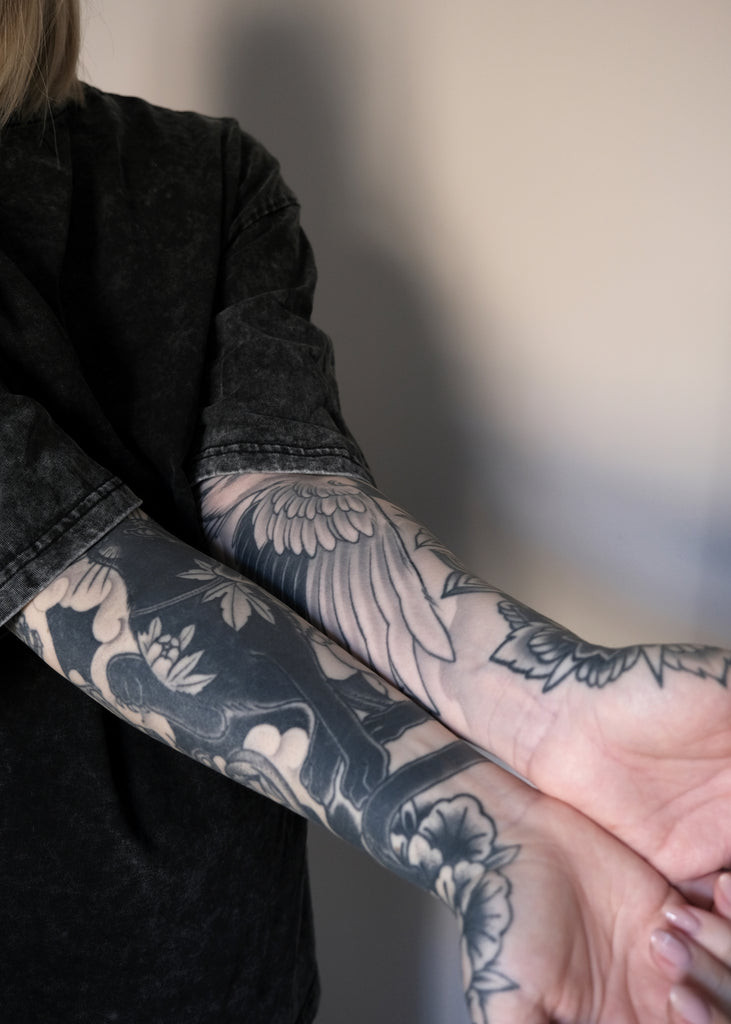 Forearm tattoos
Forearm tattoos
Forearm tattoos are frequently cited as one of the best places for tattoos for those concerned about pain, as experienced by members of the tattooat.com community. Tattoos on Instagram user @barbaradzerve.
If you’re still unsure about the potential pain level of a specific spot, here’s a pro tip from experienced tattoo artist Mikkel Elkjaer:
“Pinch the area where you’re thinking of getting tattooed. This gives you a rough idea of how sensitive it might be.”
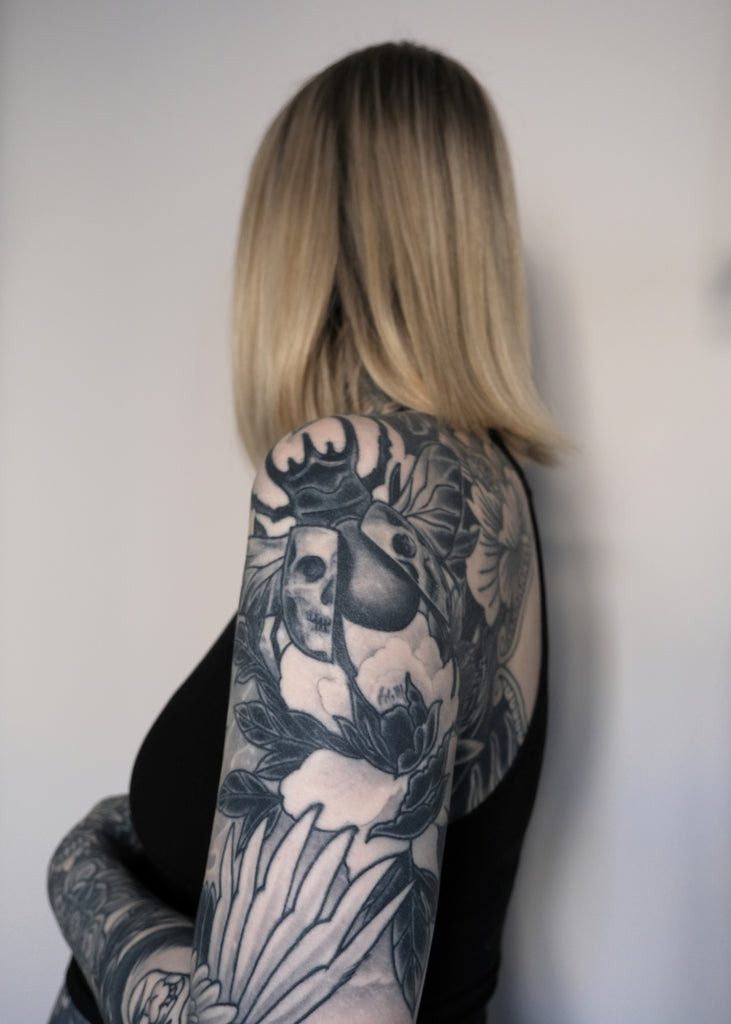 Upper arm tattoos
Upper arm tattoos
The outer upper arm is also considered among the best places for tattoos with less pain, offering a fleshy area away from sensitive bone structures.
Decoding Tattoo Pain: What Really Affects How Much It Hurts?
While placement is key, many factors influence how you experience tattoo pain. It’s not just about location; it’s a mix of personal and situational elements. Let’s break down what can make a tattoo hurt more or less:
Age Factors
Some research suggests that pain sensitivity might decrease as we age. The theory is that older individuals might feel less pain during tattooing. However, anecdotal evidence from seasoned tattoo collectors doesn’t always support this. While pain tolerance might shift with age, other factors often play a more significant role. Many older tattooed individuals find it harder to endure longer sessions, but experiences vary widely.
Biological Sex and Hormones
Studies indicate potential differences in pain perception based on biological sex. Research suggests individuals assigned female at birth might experience pain more intensely. However, this area needs more extensive research. For menstruating individuals, hormonal fluctuations during their cycle can also affect pain tolerance. Period cycles can influence pain sensitivity, potentially making tattoos feel more painful at certain times of the month.
Tattoo Style and Technique
The tattooing technique itself can influence pain. Bold lines and color packing, common in traditional tattoos, might feel more intense compared to delicate fine-line work. Hand-poke tattoos, for example, are often perceived as gentler and less painful by some, while others find them more time-consuming and thus, more painful in a different way. Personal preference and pain perception vary greatly.
Tattoo Session Duration
Smaller tattoos are generally less painful simply because they take less time. The longer you’re under the needle, the more trauma and irritation your skin endures. Extended tattoo sessions can also lead to discomfort from holding the same position for a long time, which can amplify perceived pain.
The Tattoo Artist’s Approach
The skill and technique of your tattoo artist significantly impact pain. Some artists are known for a “heavy hand,” while others are gentler. Factors like frequent “dry wiping” (excessively wiping the tattoo area during the process) can also increase irritation and pain. If possible, seek recommendations or reviews about an artist’s technique and client comfort.
Psychological Expectations
Your mindset going into a tattoo session can influence your pain experience. If you anticipate extreme pain, you might perceive it more intensely. Conversely, expecting less pain might lead to a more manageable experience. Tattoo collector Alice Snape (@alicecsnape) shared her surprise at a less painful experience than anticipated:
“I didn’t hate getting my bum tattooed. I’d heard it was the most painful place ever, so maybe I was just pleasantly surprised it didn’t live up to those expectations.”
Your Physical State on Tattoo Day
Your overall well-being on the day of your appointment matters. Being tired, hungry, dehydrated, or stressed can heighten pain sensitivity. Artist Hannah Kay (@ohkay_dohkay) emphasizes the importance of self-care before a tattoo:
“If I haven’t had enough sleep or I can’t manage a good breakfast before a tattoo, I can definitely feel the difference in my pain tolerance. I often feel worse that evening too… If I’m feeling woozy I’ll ask to stop and have a drink and snack on hand to help me power through.”
Tattooing Over Existing Skin Conditions
Tattooing over scars or stretch marks can present unique pain considerations. The pain when tattooing over scars depends on the scar’s depth and nature. Similarly, skin with stretch marks might be more sensitive. Consult your tattoo artist for personalized advice and pain expectations in these situations.
Cover-Up Tattoos
Cover-up tattoos, done over existing tattoos, can sometimes be more painful. The skin might have scar tissue from the previous tattoo, potentially increasing sensitivity. However, individual experiences vary, and some find cover-ups no more painful than fresh tattoos.
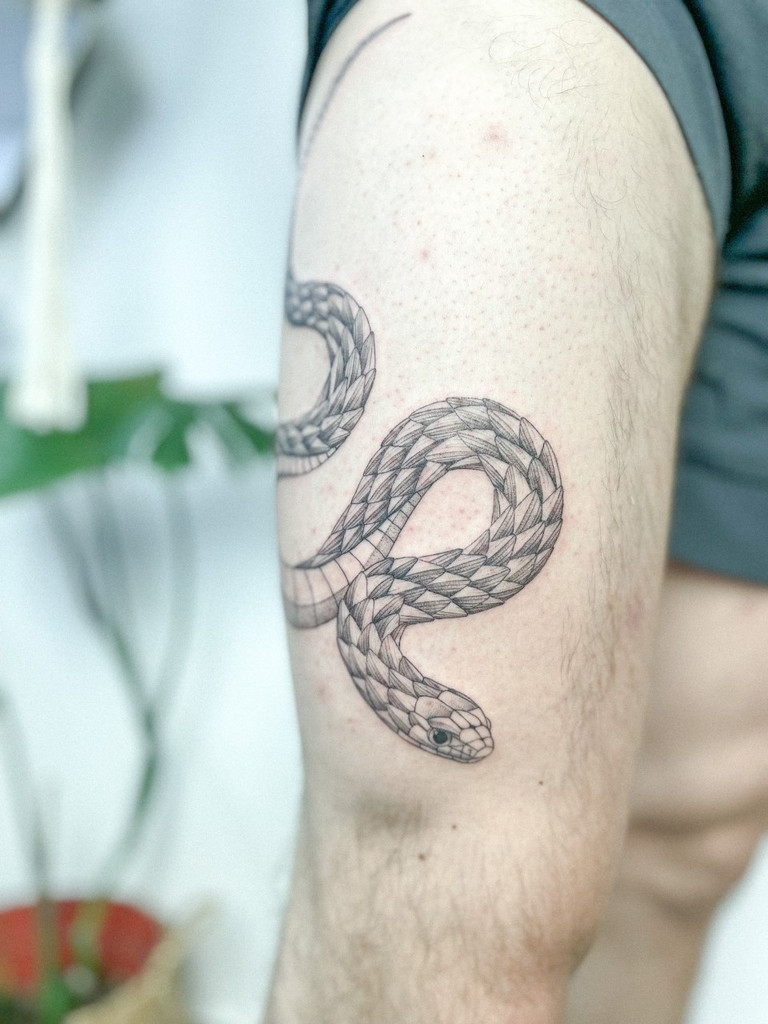 Thigh tattoo
Thigh tattoo
The outer thigh remains a popular choice as one of the best places for tattoos, known for generally lower pain levels and ample space for larger designs. Tattoo art by @mas_tattoos_
Best Tattoo Spots: Gender Considerations?
While pain perception is individual, there are some general trends based on typical body fat distribution and muscle mass. Areas like the outer shoulders and outer thighs are often cited as [best places for tattoos for women](https://www.examplewebsite.com/best-tattoos-women – Placeholder for a relevant article if available, otherwise remove), due to typically having more fat in these regions. For those seeking [best places for tattoos for men](https://www.examplewebsite.com/best-tattoos-men – Placeholder for a relevant article if available, otherwise remove), the arms, particularly forearms and outer upper arms, are frequently recommended due to higher muscle density which can buffer pain. However, these are generalizations, and personal preference and pain tolerance are paramount.
Caring For Your Ink: Setting the Stage for a Better Tattoo Experience
Taking care of your skin before you get tattooed can actually contribute to a slightly less painful experience during the session and better healing afterwards. We highly recommend using our Daily Moisturizer in the weeks leading up to your appointment. Hydrated, healthy skin is more resilient. Just remember to skip moisturizer on the day of your tattoo, as it can interfere with stencil application. And for comprehensive aftercare, explore our full range of tattoo aftercare products.
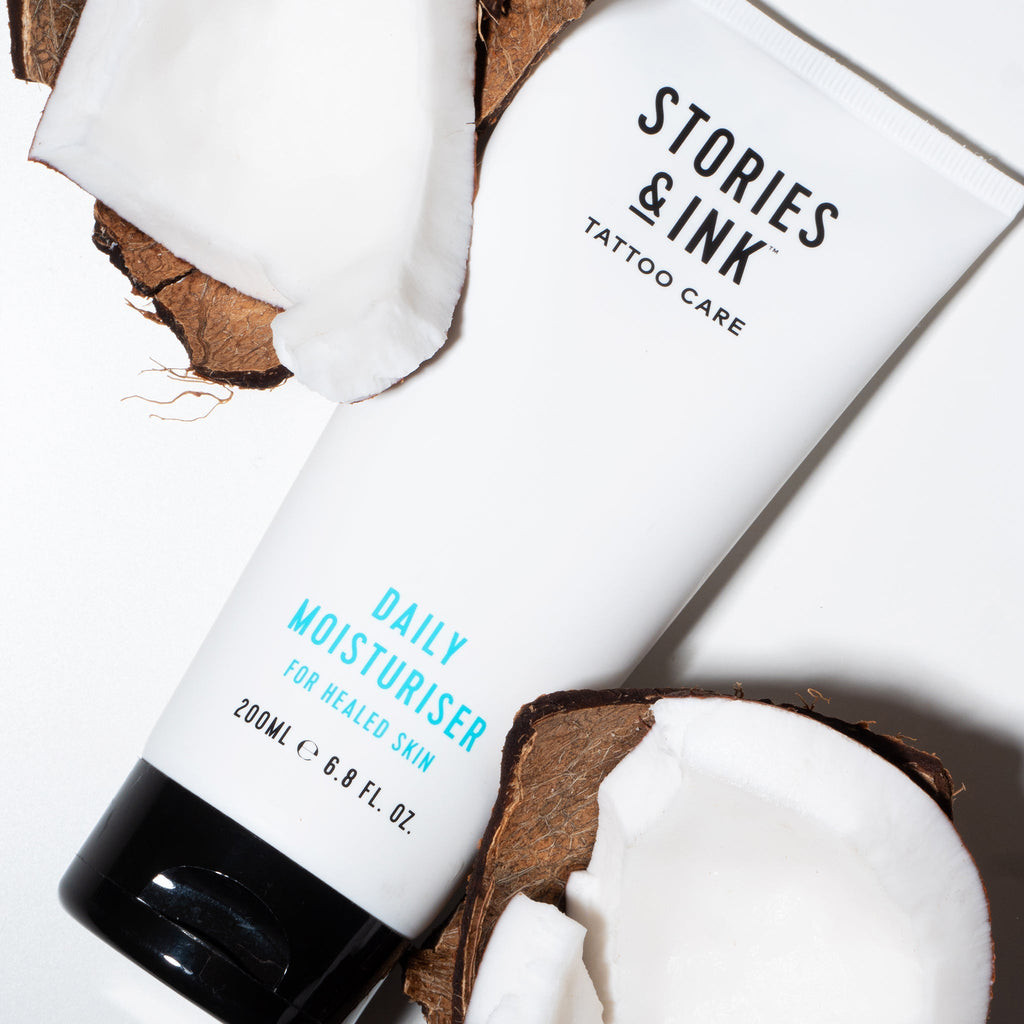 Stories & Ink Daily Moisturiser
Stories & Ink Daily Moisturiser
Stories & Ink Daily Moisturiser, a recommended product to prepare your skin and enhance your tattoo experience.
For more in-depth preparation tips, check out our pre-tattoo preparation guide. Being well-informed and prepared is your best strategy for a smoother, less painful, and ultimately, more enjoyable tattoo journey.
